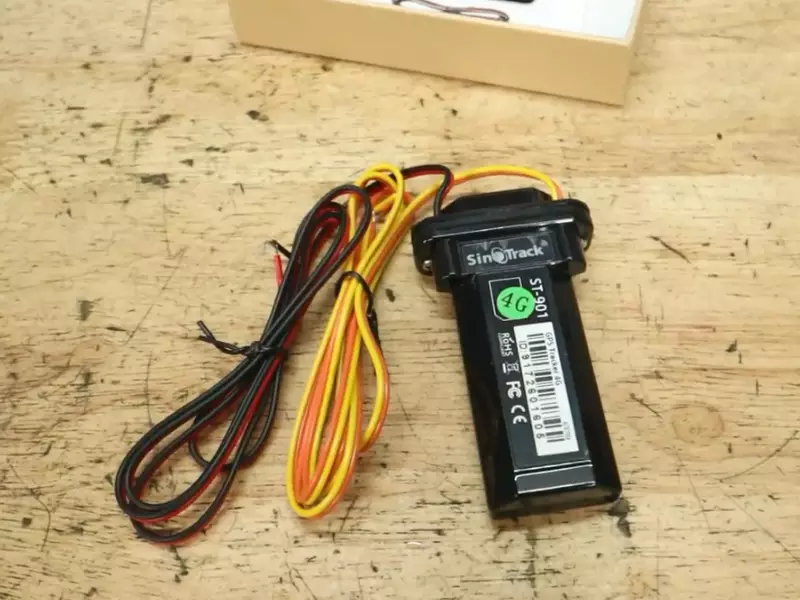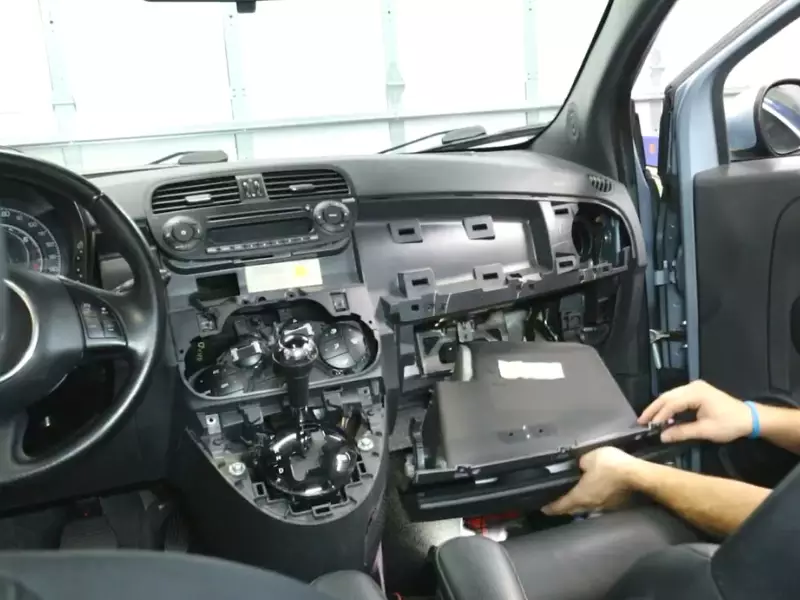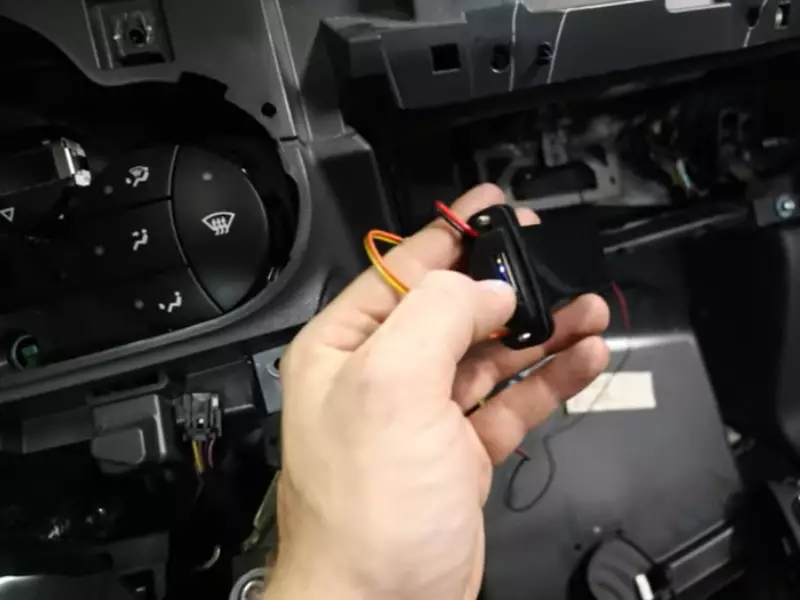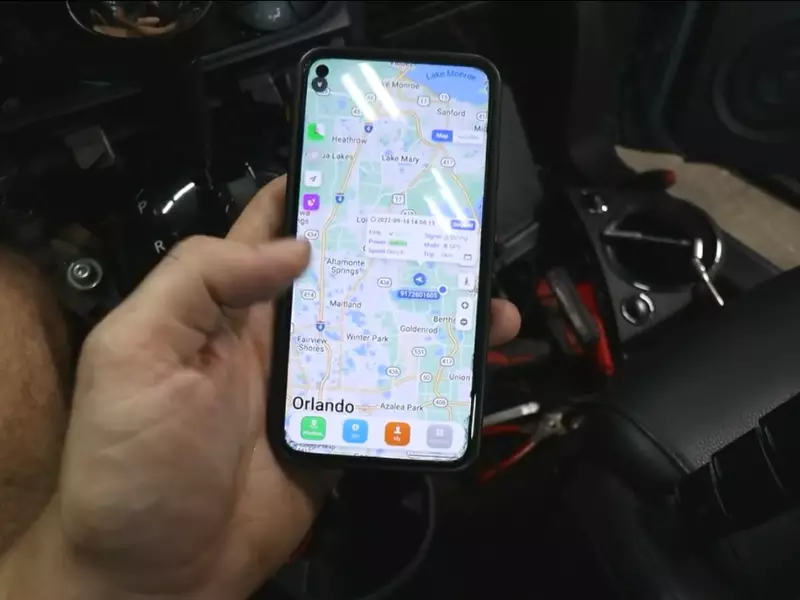To install a car tracker, start by locating the OBD-II port in your vehicle. Then, plug in the tracker and follow the instructions provided by the manufacturer.
Installing a car tracker can provide numerous benefits, such as increased security and easy monitoring of your vehicle’s location. Whether you want to keep an eye on your teenage driver or protect your vehicle from theft, a car tracker can be a valuable tool.
We will guide you through the process of installing a car tracker in a simple and straightforward manner. By following these steps, you can have a car tracker up and running in no time. So, let’s get started and ensure the safety and security of your vehicle.
Why Install A Car Tracker
Installing a car tracker is a wise decision for any car owner. It offers a range of benefits that can greatly enhance the security, safety, and peace of mind for both the driver and the car itself. In this article, we will delve into the reasons why you should consider installing a car tracker and explore the various benefits it brings.

Benefits of Installing a Car Tracker
Increased Security and Safety
One of the primary benefits of installing a car tracker is the increased security and safety it provides. Car theft has become a prevalent issue in many areas, and it can be devastating for car owners. However, with a car tracker in place, the chances of recovery are significantly higher. In the unfortunate event that your car is stolen, the tracker will enable law enforcement agencies to track its exact location, increasing the likelihood of the car’s retrieval and the apprehension of the culprits.
Moreover, car trackers act as a deterrent for potential thieves. The knowledge that a car is equipped with a tracking device can discourage criminals from targeting it in the first place. This serves as an effective preventive measure, safeguarding your valuable asset.
Peace of Mind for Car Owners
Installing a car tracker provides a tremendous sense of peace of mind for car owners. Whether you have a high-end luxury vehicle or a reliable everyday car, knowing that its whereabouts can be easily tracked offers reassurance. It eliminates the constant worry of theft and increases the chances of recovering the vehicle in case of any mishap.
Furthermore, car trackers can come equipped with additional features that further enhance peace of mind. Some trackers offer notifications and alerts, enabling car owners to receive instant updates on their mobile devices in case of unauthorized movement or suspicious activities. This allows for quick response and proactive measures to be taken to safeguard the car and its occupants.
In summary, installing a car tracker is a crucial step for any car owner. Not only does it provide increased security and safety, but it also offers peace of mind in knowing that your car is protected. With the ability to track your vehicle’s location in real time, a car tracker is undoubtedly a valuable addition to any car and should be seriously considered by all car owners.
Choosing The Right Car Tracker
Factors to consider before selecting a car tracker
Choosing the right car tracker is an important decision that can greatly enhance the security and safety of your vehicle. However, with so many options available in the market, it can be overwhelming to make the right choice. It’s essential to consider several factors before finalizing a car tracker for your needs. By carefully evaluating these factors, you can ensure that you invest in a tracker that meets your requirements and provides maximum benefit.
- GPS Accuracy: One of the key factors to consider is the GPS accuracy of the car tracker. It should provide real-time and accurate location updates, allowing you to track your vehicle with precision.
- Battery Life: The battery life of the tracker is another crucial aspect to consider. A long-lasting battery ensures uninterrupted tracking, eliminating the need for frequent recharging.
- Alerts and Notifications: Look for a car tracker that offers customizable alerts and notifications. These features can include geofence alerts, over-speeding alerts, and tampering alerts, which will help you stay informed about any unusual activities related to your vehicle.
- Data Storage: Consider the data storage capabilities of the tracker. It should have sufficient memory to store and retrieve historical data, allowing you to analyze past journeys and identify patterns.
- Installation Process: Evaluate the installation process of the car tracker. It should be user-friendly and easy to install. Some trackers might require professional assistance, while others can be set up effortlessly by following simple instructions.
- Compatibility: Ensure that the car tracker you choose is compatible with your vehicle. Different trackers support different models and make of cars, so it’s vital to check compatibility before making a purchase.
Features to look for in a car tracker
Now that you are aware of the important factors to consider, let’s dive into the key features that you should look for in a car tracker.
- Real-time Tracking: A car tracker should offer real-time tracking, allowing you to monitor the location of your vehicle at any given moment.
- Geofencing: Geofencing is a crucial feature that allows you to set virtual boundaries for your vehicle. The tracker sends an alert if the vehicle enters or exits the predetermined area, ensuring you can monitor its movements effectively.
- Remote Immobilization: This advanced feature enables you to remotely immobilize your vehicle in case of theft. With the click of a button, you can immobilize the engine, preventing unauthorized access.
- Mobile App: Look for a car tracker that provides a user-friendly mobile app. The app should offer intuitive navigation, easy access to tracking information, and customization options for alerts and notifications.
- Speed Monitoring: A good car tracker should be able to monitor your vehicle’s speed in real time and provide alerts if it exceeds a set limit. This feature is particularly useful for parents who want to keep an eye on their teenage drivers or fleet managers who want to ensure compliance with speed limits.

Types of car trackers available in the market
There are several types of car trackers available in the market, each with its own set of features and functionalities. Here are the three main types:
| Type | Description |
|---|---|
| GPS Trackers | These trackers use Global Positioning System (GPS) technology to provide accurate location information. They often come with additional features such as geofencing and real-time tracking. |
| Radio Frequency (RF) Trackers | RF trackers use radio signals to track your vehicle’s location. They are useful in situations where GPS signals might be blocked or unavailable, such as underground parking lots or areas with poor network coverage. |
| OBD (On-Board Diagnostics) Trackers | OBD trackers plug directly into the OBD port of your vehicle, providing real-time data about engine performance, fuel consumption, and other vehicle diagnostics. They combine tracking capabilities with vehicle monitoring features. |
Each type of car tracker has its own advantages and disadvantages, so it’s important to assess your specific needs and choose the one that best suits your requirements.
By considering the factors, looking for essential features, and understanding the types of car trackers available, you can confidently choose the right car tracker for your vehicle. Enhance the security of your car and gain peace of mind by investing in a car tracker that meets your needs and provides reliable tracking capabilities.
Installing A Car Tracker:
Installing a car tracker is a smart decision for vehicle owners who want to keep their vehicles secure at all times. Whether you want to monitor the whereabouts of your fleet vehicles or protect your personal car from theft, a car tracker can provide peace of mind.
In this guide, we will walk you through the step-by-step process of installing a car tracker. From pre-installation preparations to troubleshooting, we’ve got you covered. Let’s get started!
Pre-installation preparations
Before diving into the installation process, it’s important to make a few preparations:
- Ensure you have the necessary tools handy. These may include a screwdriver, wire cutters, wire strippers, electrical tape, and zip ties.
- Read and understand the car tracker’s installation manual provided by the manufacturer. Familiarize yourself with the unit’s features and specifications to ensure a smooth installation process.
Checking vehicle compatibility
Not all car trackers are compatible with every vehicle. Therefore, it’s essential to verify the compatibility of the tracker with your car before proceeding. Check the manufacturer’s website or consult with a professional to ensure the tracker is compatible with your vehicle’s make and model.
Gathering the necessary tools
Before getting your hands dirty, gather all the necessary tools you will need for the installation. This will save you time and prevent any interruptions during the process. Some common tools you may need include:
- Screwdriver
- Wire cutters
- Wire strippers
- Electrical tape
- Zip ties
Mounting the car tracker unit
Once you have gathered the tools, it’s time to mount the car tracker unit in your vehicle. Follow these steps:
- Locate a suitable spot in your vehicle where the tracker can be securely mounted. This could be under the dashboard, near the steering column, or in the glove compartment.
- Use the screwdriver to attach the tracker unit to the chosen location. Ensure a firm and stable attachment.
- Double-check that the unit is mounted securely and will not interfere with the vehicle’s normal operation or cause any inconvenience to the driver.
Choosing the right location for installation
Choosing the right location for the car tracker installation is crucial for its effectiveness. Consider the following factors:
- Accessibility: The tracker should be easily accessible for maintenance and troubleshooting purposes. It should not be obstructed by other vehicle components.
- Concealment: To prevent tampering or removal, choose a location that is discreet and not easily detectable.
Securing the tracker unit in the vehicle
After mounting the car tracker unit in the chosen location, ensure it is securely fastened to the vehicle. This will prevent any movement or damage while the vehicle is in motion. Use zip ties or other suitable fasteners to secure the unit tightly.
Connecting the tracker to the car’s power source
The car tracker requires power to operate, and connecting it to the vehicle’s power source is a critical step. Ensure the power source is compatible with the tracker’s requirements. Follow these steps:
- Locate the vehicle’s power source, commonly the fuse box or the vehicle’s battery.
- Cut the wire leading to the power source, leaving enough length to work with.
- Strip the insulation from the wire ends.
- Connect the tracker’s power cables to the stripped wire ends.
- Secure the connections with electrical tape to prevent any loose connections.
Understanding the wiring requirements
Understanding the wiring requirements of the car tracker is essential to ensure proper installation. Refer to the manufacturer’s manual or online resources for specific instructions on the wiring setup.

Properly connecting the power cables
Now it’s time to connect the power cables of the car tracker to the vehicle’s power source. Follow these steps:
- Identify the positive and negative terminals of the tracker and the power source.
- Connect the positive terminal of the tracker to the positive terminal of the power source.
- Connect the negative terminal of the tracker to the negative terminal of the power source.
- Double-check that the connections are secure and free from any loose wires.
Testing and troubleshooting
After completing the installation, it’s time to test the car tracker and address any issues that may arise. Follow these steps:
- Turn on the vehicle and ensure that the tracker is receiving power.
- Check the tracker’s functionalities by accessing its control panel or using the manufacturer’s tracking software.
- If any issues are detected, consult the troubleshooting section of the manufacturer’s manual or seek professional assistance.
Verifying the tracker functionality
Once the car tracker is installed and tested, it’s important to verify its functionality. Ensure that the tracker is accurately recording and transmitting the vehicle’s location data. Monitor the tracking system for a few days to confirm its reliability.
Addressing any installation issues
If you encounter any installation issues or face difficulties during the process, it’s crucial to address them promptly. Consult the manufacturer’s support team, refer to online resources, or seek professional help to resolve any issues that may arise.
Congratulations! You have successfully installed a car tracker in your vehicle. Enjoy the peace of mind that comes with knowing your vehicle is protected and monitored at all times.
Tips For Effective Car Tracker Installation
Installing a car tracker is an important step towards ensuring the safety and security of your vehicle. It enables you to track its location, monitor its movement, and even recover it in case of theft. However, to make the most out of your car tracker, it’s crucial to install it correctly. Here are some tips that will help you achieve a successful installation.
Positioning the antenna for optimal performance
One of the key factors that can affect the performance of your car tracker is the positioning of its antenna. To ensure optimal signal reception, it’s important to place the antenna in the right location. Here are a few considerations:
- Choose a spot with a clear line of sight to the sky, as obstructions like metal or concrete can weaken the signal.
- Mount the antenna on a flat, non-metallic surface for better signal reception.
- Aim for a location near the car’s edge to minimize interference from the vehicle itself.
By following these guidelines, you can maximize the effectiveness of your car tracker’s antenna and improve its overall performance.
Concealing the tracker to prevent tampering
When installing a car tracker, it’s important to keep it hidden from prying eyes to prevent tampering or removal. Here are a few tips to help you conceal the tracker effectively:
- Choose a location that is not easily accessible or visible, such as under the dashboard or inside the center console.
- Consider using double-sided adhesive or industrial-strength Velcro to secure the tracker in place.
- Avoid placing the tracker in obvious locations such as the glove compartment or the trunk.
By concealing the tracker smartly, you can minimize the risk of it being detected and tampered with, ensuring its effectiveness in tracking your vehicle’s location.
Securing the wiring to avoid any potential hazards
Properly securing the wiring of your car tracker is crucial to avoid any potential hazards or interference with the vehicle’s functionality. Here are some tips to keep in mind:
- Organize and bundle the wires neatly using zip ties or wire looms to prevent them from rubbing against sharp edges or moving parts.
- Ensure that the wiring is away from areas that generate heat, such as the engine or exhaust system, to minimize the risk of damage or fire.
- Check for any exposed wires or loose connections and fix them immediately to maintain a reliable and safe installation.
By securing the wiring properly, you can avoid potential hazards and ensure your car tracker functions reliably for an extended period.

Maintaining And Troubleshooting Car Trackers
Installing a car tracker is a smart decision to safeguard your vehicle and ensure peace of mind. Once you have successfully installed the tracker, it is important to regularly maintain and troubleshoot it to ensure optimal performance. In this section, we will discuss some essential maintenance checks and troubleshooting tips for your car tracker.
Regular maintenance checks
Performing regular maintenance checks on your car tracker is crucial to identify any potential issues and ensure its longevity. Here are some key maintenance checks you should undertake:
- Inspect the physical condition of the tracker, ensuring that it is properly mounted and securely attached to the designated location.
- Check all cables and connectors for any signs of damage or loose connections. If any issues are found, promptly replace or repair them.
- Monitor the status lights on the tracker to ensure they are functioning correctly. A quick glance at these lights can provide valuable information about the tracker’s operational status.
- Regularly inspect the GPS antenna for any damage or obstructions that may affect signal reception.
Keeping the trackers clean and free from debris
Over time, car trackers can accumulate dust, dirt, or other debris, leading to potential performance issues. It is important to regularly clean the trackers to avoid any problems. Follow these steps to keep your trackers clean:
- Use a soft, dry cloth to wipe off any surface debris from the tracker.
- If necessary, lightly dampen the cloth with water or a mild cleaning solution to remove stubborn dirt.
- Avoid using harsh chemicals or abrasive materials that may damage the tracker’s exterior.
- Ensure that all openings and ports are clear of any dust or debris, using a can of compressed air if needed.
Checking for software updates
Software updates are essential to enhance the functionality and security of your car tracker. Always keep an eye out for any available software updates and follow these steps to ensure your tracker is up to date:
- Visit the manufacturer’s website or the tracker’s official app to check for any available updates.
- If an update is available, follow the provided instructions to download and install it.
- During the update process, ensure that the tracker remains connected to a stable power source to avoid any interruptions.
- Regularly check for software updates to ensure your tracker remains optimized and equipped with the latest features.
Troubleshooting common issues
Even with regular maintenance and updates, car trackers may encounter common issues. Here are some troubleshooting tips to address these issues:
- If the tracker is not providing accurate location information, check the GPS antenna for any obstructions or damage.
- If the tracker is not connecting to the monitoring platform, ensure that the SIM card is activated and properly inserted.
- If the tracker is experiencing signal loss, consider placing it in a more open area without any obstructions.
Identifying and fixing connectivity problems
Connectivity issues can hinder the performance of your car tracker. Here’s how to identify and resolve common connectivity problems:
- If the tracker is not connecting to the network, ensure that the SIM card has sufficient credit and is supported by the network provider.
- Verify that the network coverage in your area is adequate for the tracker’s cellular data connection.
- Restart the tracker and monitor its connection status. Sometimes, a simple restart can resolve connectivity problems.
- If the issue persists, contact your tracker manufacturer’s customer support for further assistance.
Resolving battery or power-related issues
Battery or power-related issues can impact the functionality of your car tracker. Here’s how to troubleshoot these problems:
- Ensure that the tracker is connected to a reliable power source, such as the vehicle’s battery or a separate power supply.
- Check the battery or power levels of the tracker regularly, and recharge or replace them as necessary.
- If the battery drains quickly, consider reducing the tracker’s reporting frequency or optimizing its power-saving settings.
- If all else fails, consult your tracker’s user manual or contact the manufacturer’s support team for further guidance.
Maintaining and troubleshooting your car tracker is essential to ensure its effective performance. By following these tips and performing regular checks, you can enjoy the full benefits of your car tracker and experience enhanced security and peace of mind.
Frequently Asked Questions For How To Install Car Tracker
Can I Install Car Tracker Myself?
Yes, you can install a car tracker yourself. It is a straightforward process that can be done with basic tools and instructions. Just make sure to follow the provided guidelines for proper installation.
How Can I Put A Tracker On My Car Without Them Knowing?
To secretly put a tracker on your car, you can hire a professional who specializes in covert tracking installations. They can install the tracker discreetly without the knowledge of others.
How Can I Put A Tracker On My Daughter’s Car?
To put a tracker on your daughter’s car, you can purchase a GPS tracking device designed for vehicles. These devices can be easily installed and allow you to keep track of the car’s location remotely. Just make sure to choose a reliable and reputable tracker for accurate results.
How Much Does It Cost To Have A Tracker Fitted To Your Car?
The cost of fitting a tracker to your car varies depending on the type of tracker and the provider. Typically, prices range from $100 to $500 for installation and may require a monthly subscription fee for the tracking service.
Conclusion
Installing a car tracker is a simple and effective way to enhance your vehicle’s security. By following the step-by-step instructions provided in this blog post, you can easily install a car tracker and have peace of mind knowing that your vehicle is protected.
With its user-friendly interface and advanced tracking capabilities, a car tracker is a valuable investment for any car owner. Don’t wait any longer, take action now and install a car tracker to protect your vehicle from theft.
